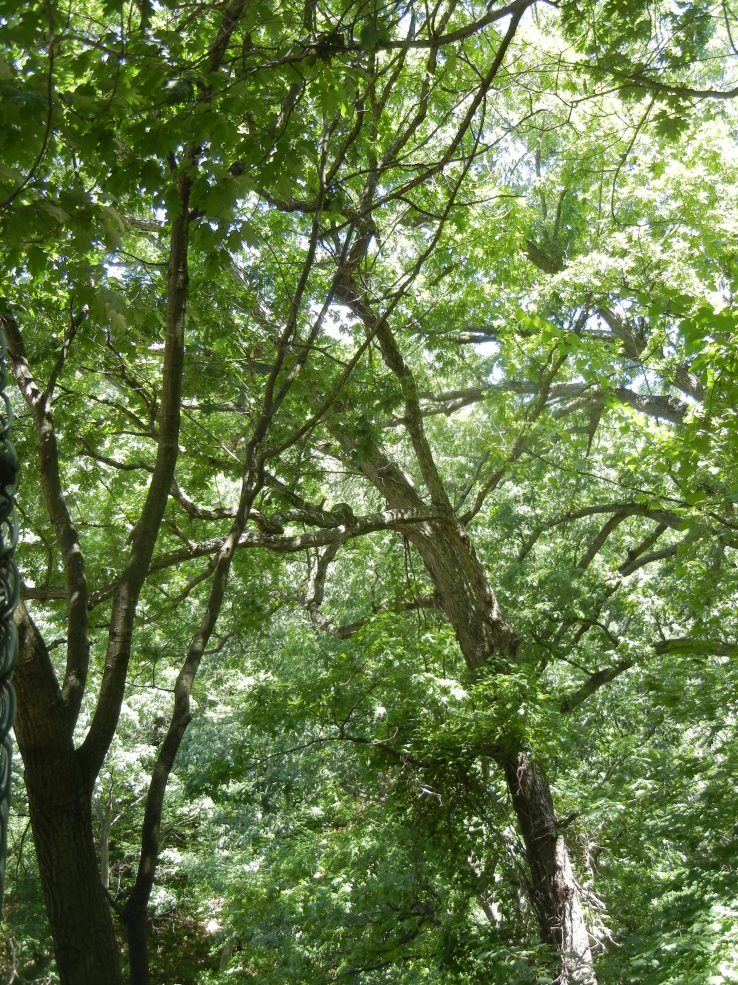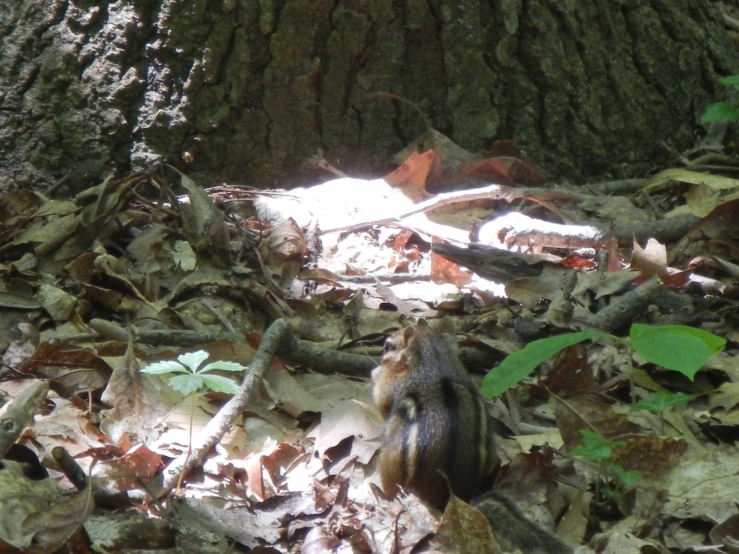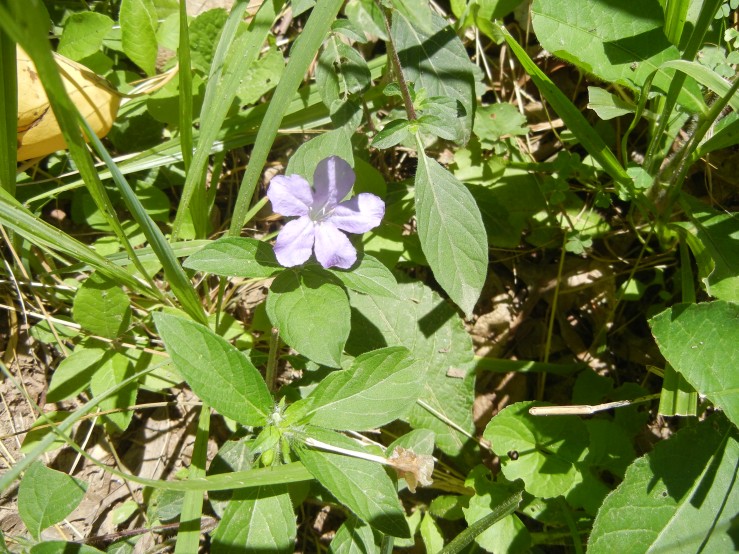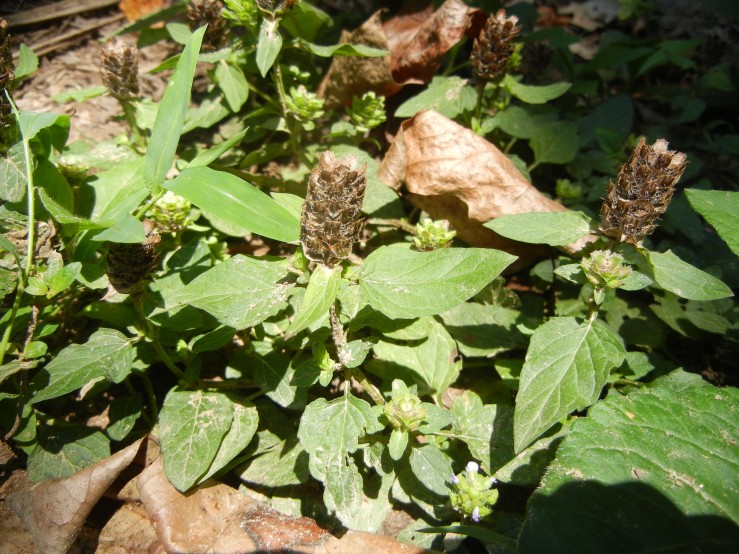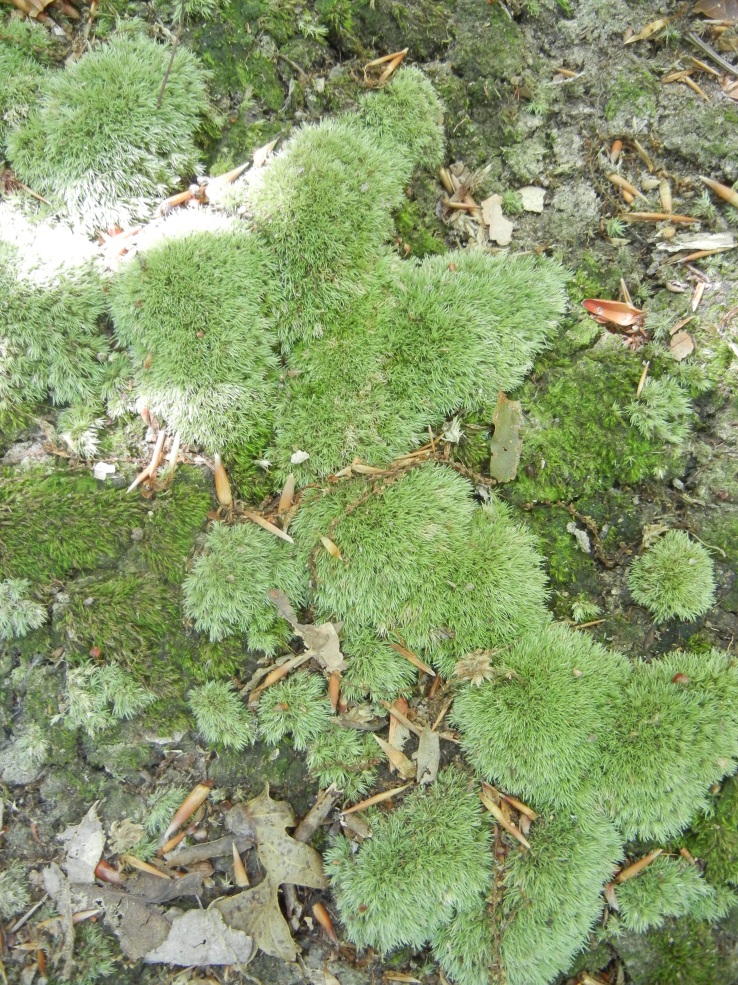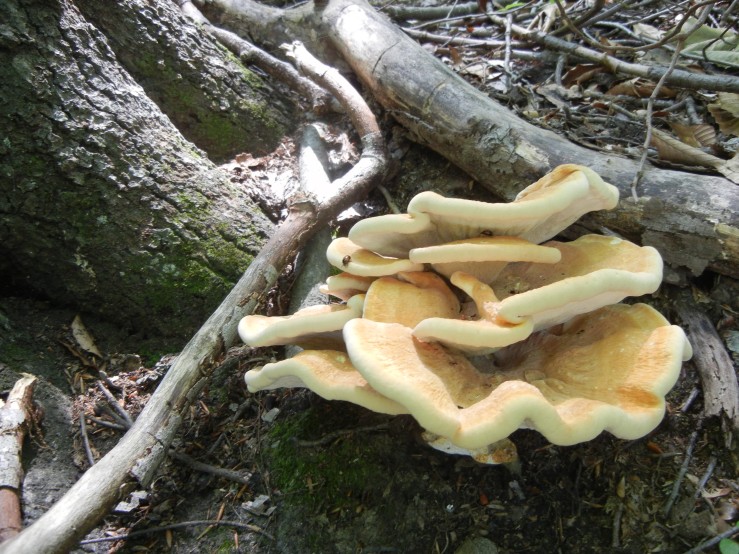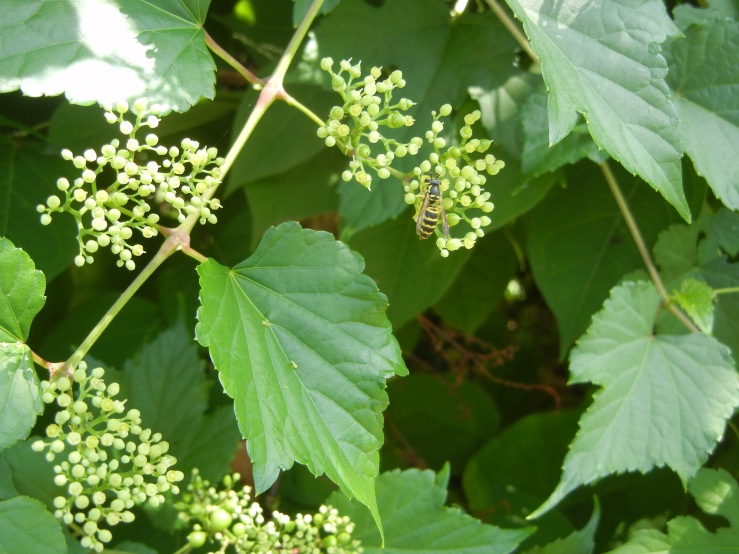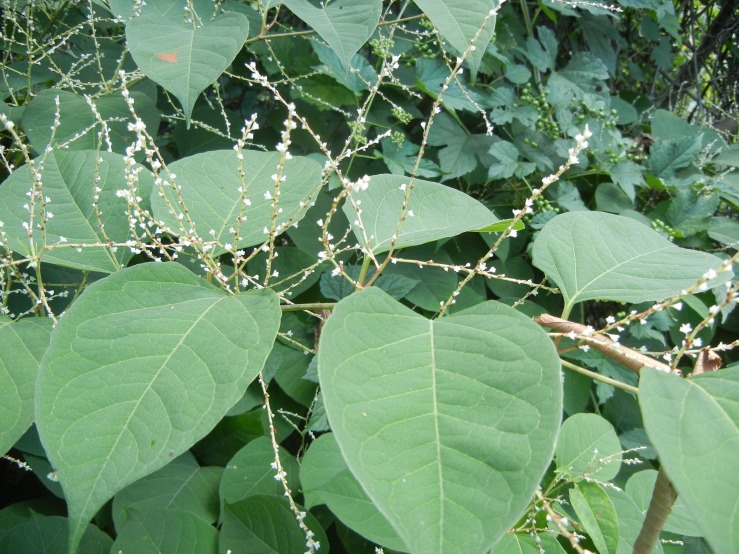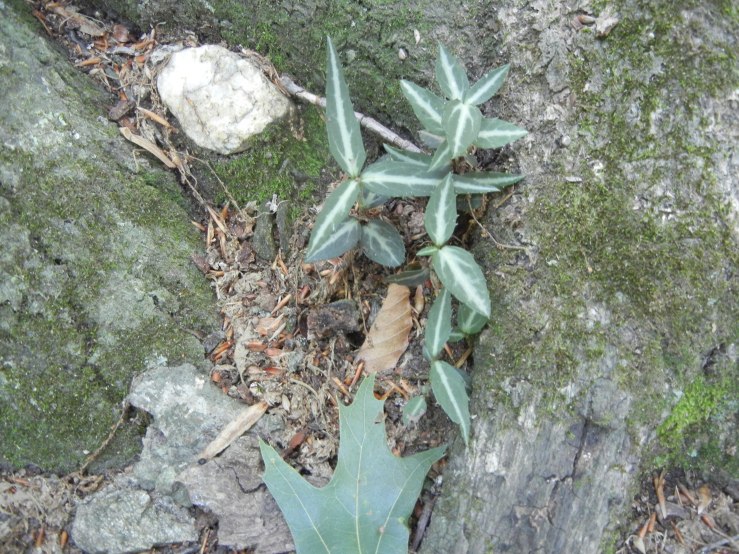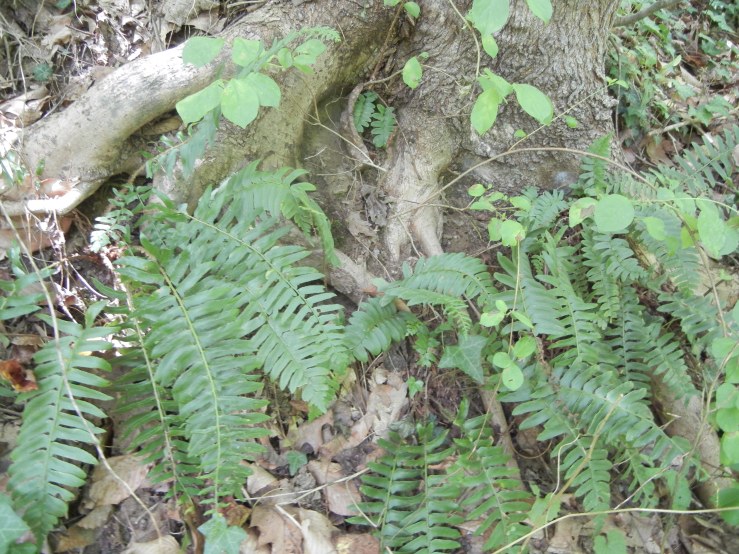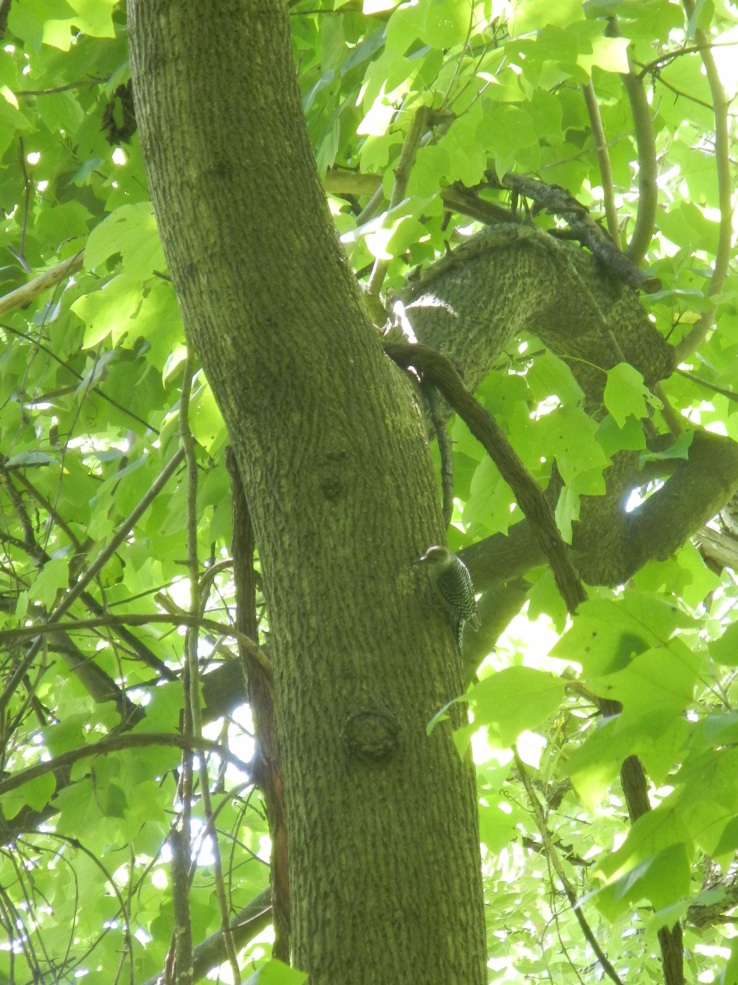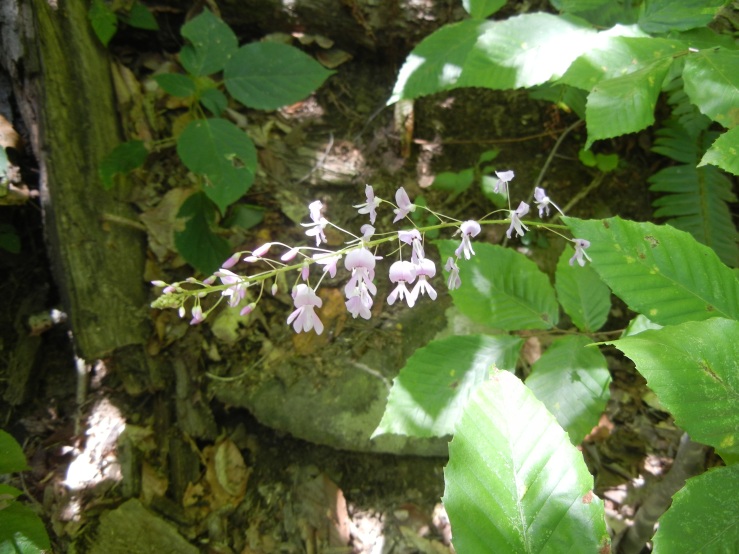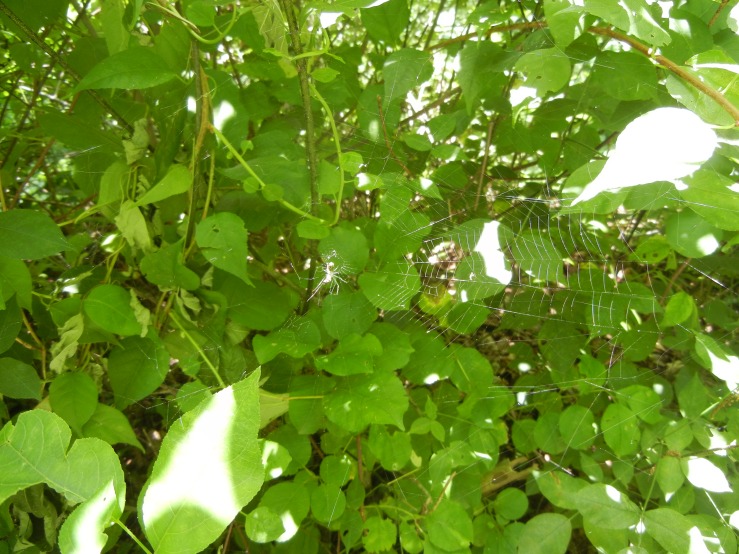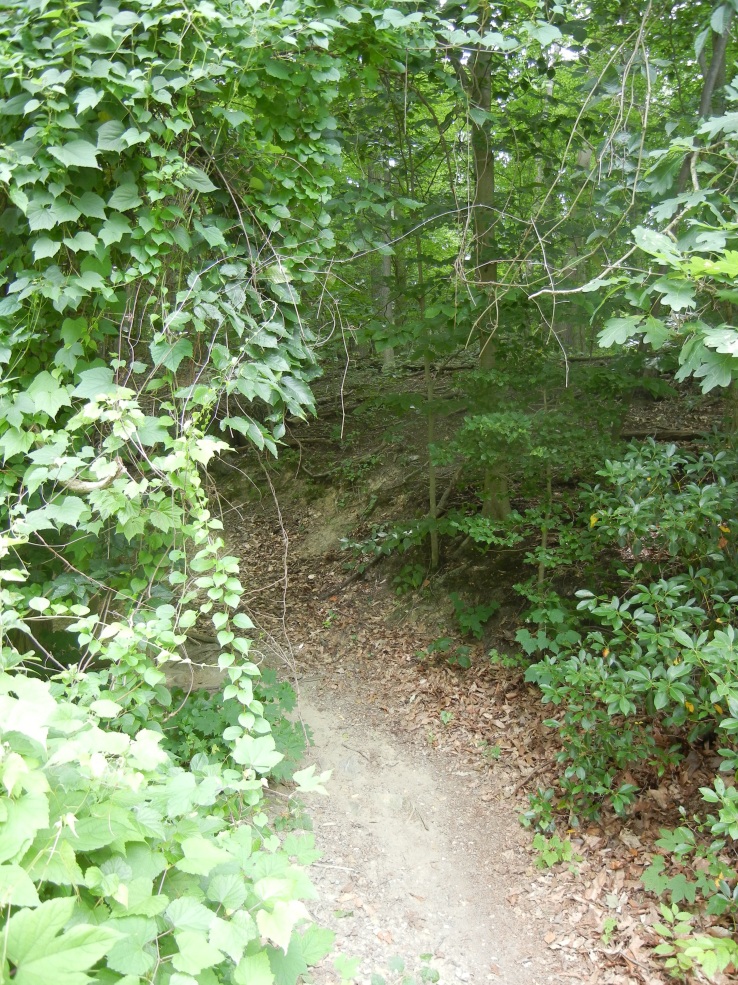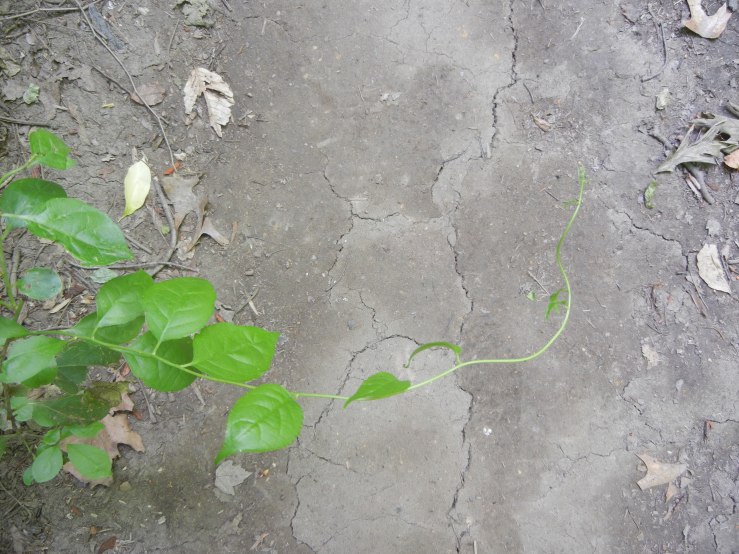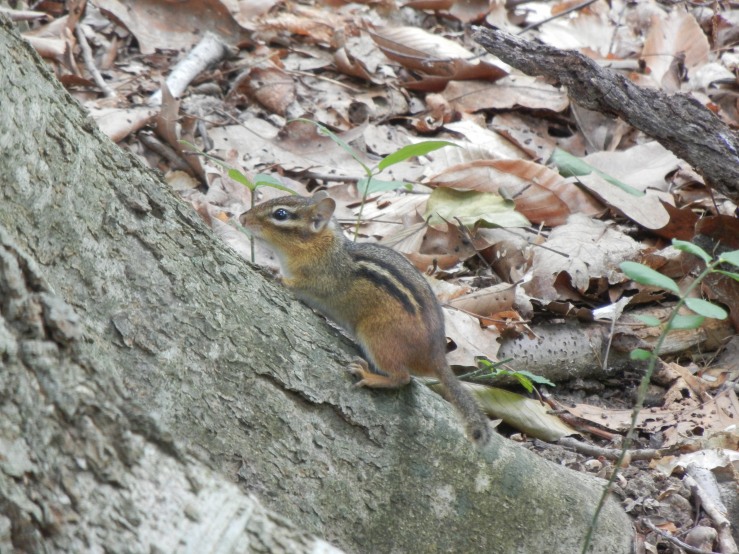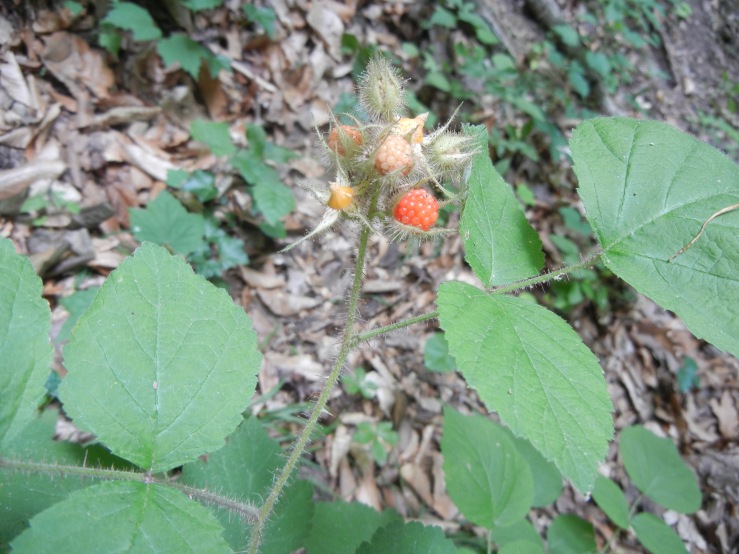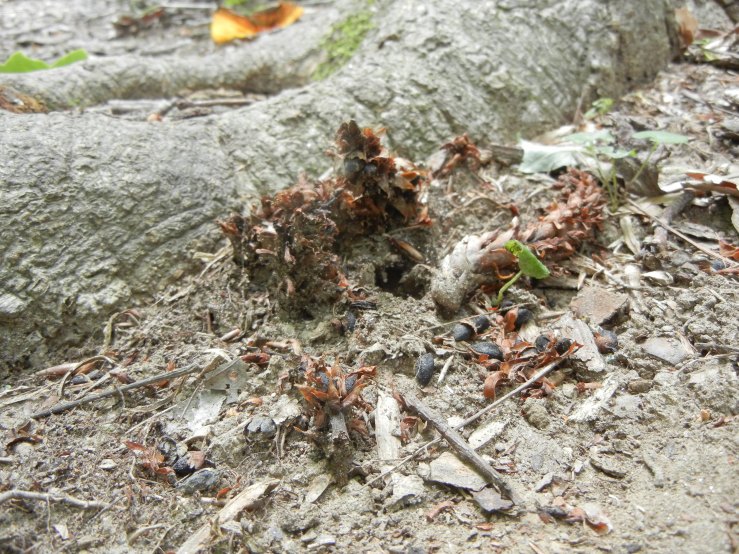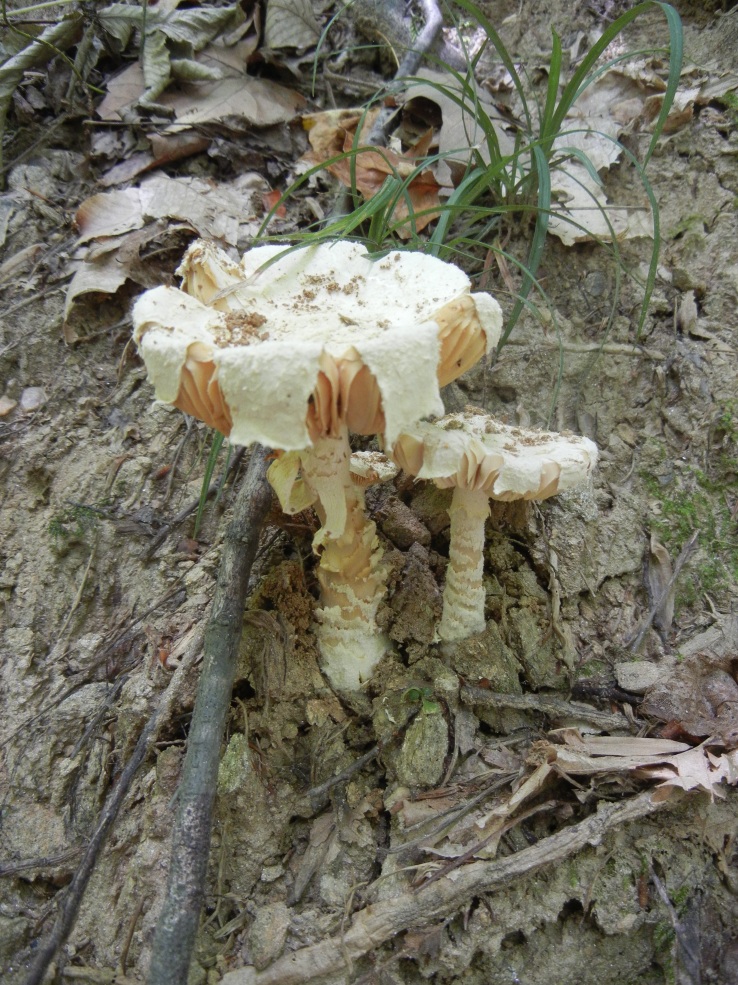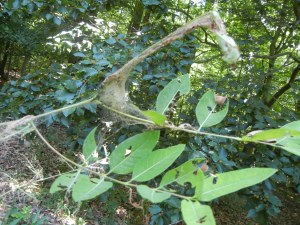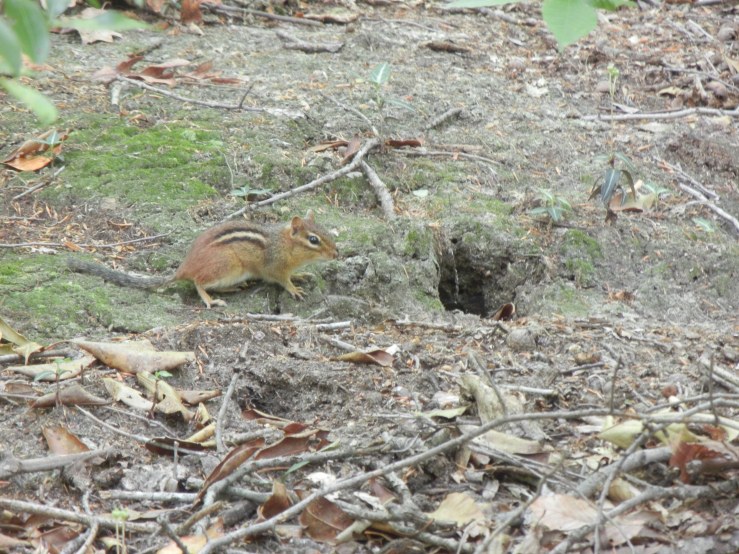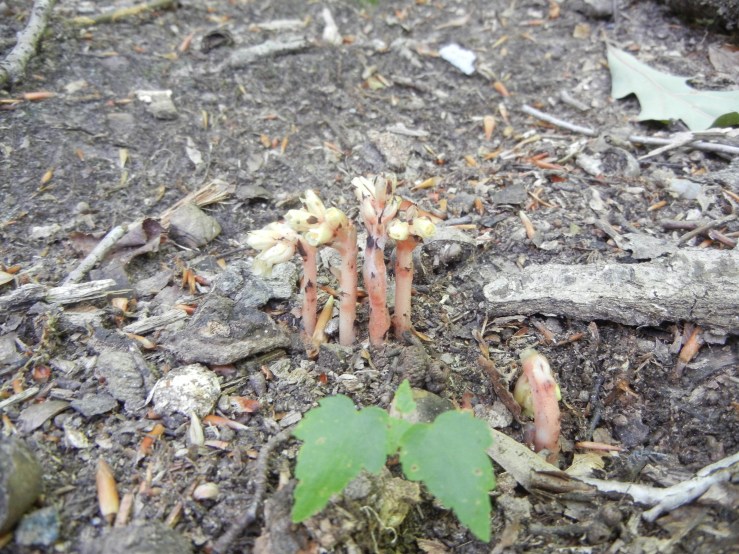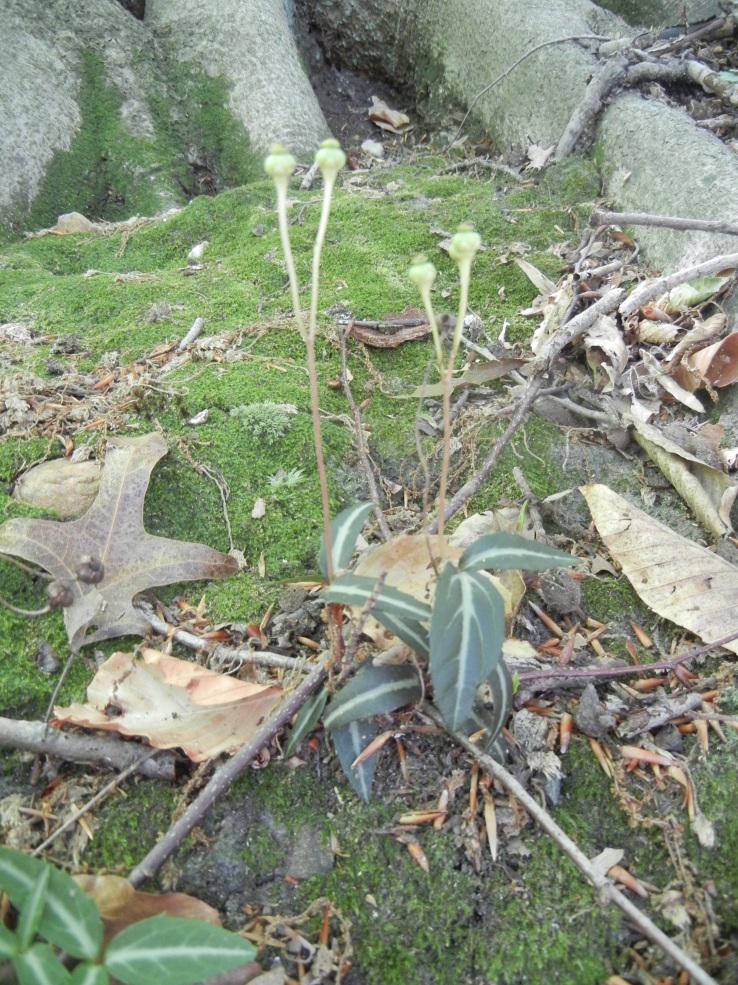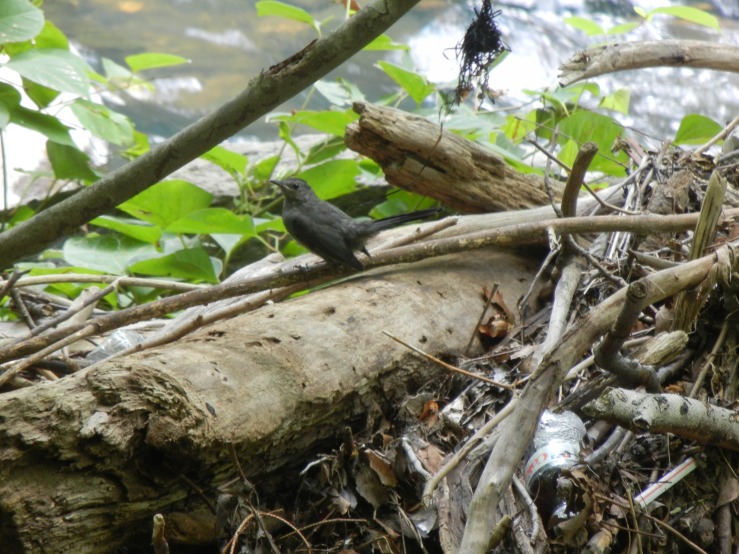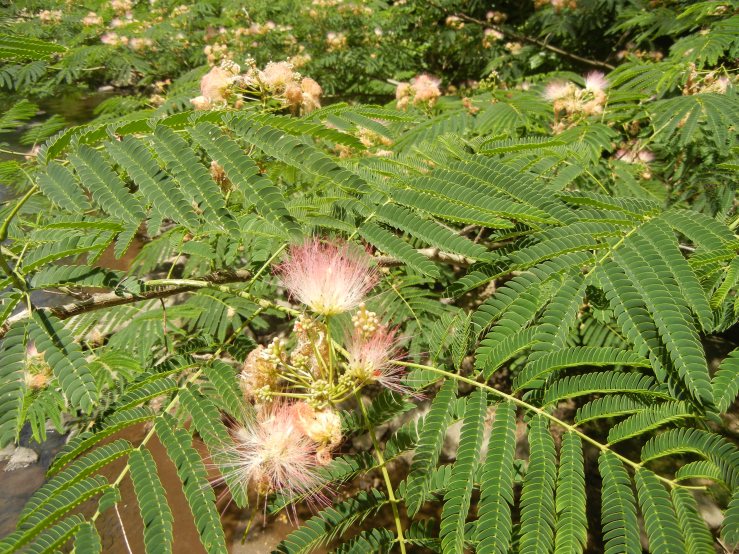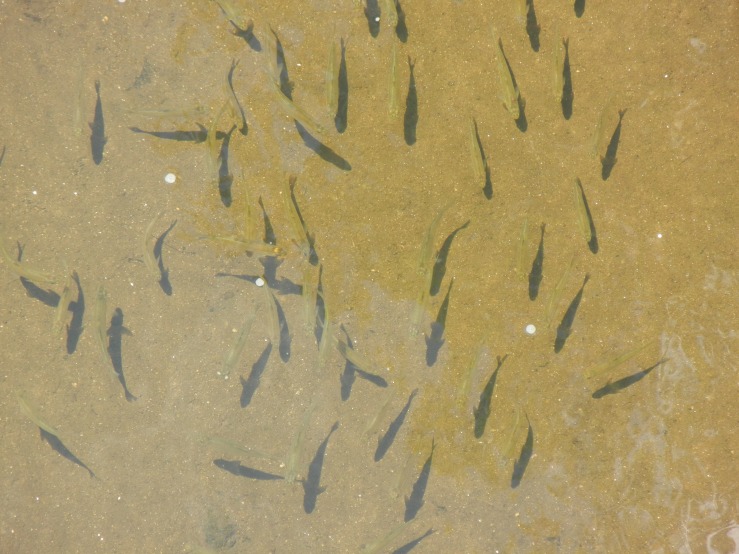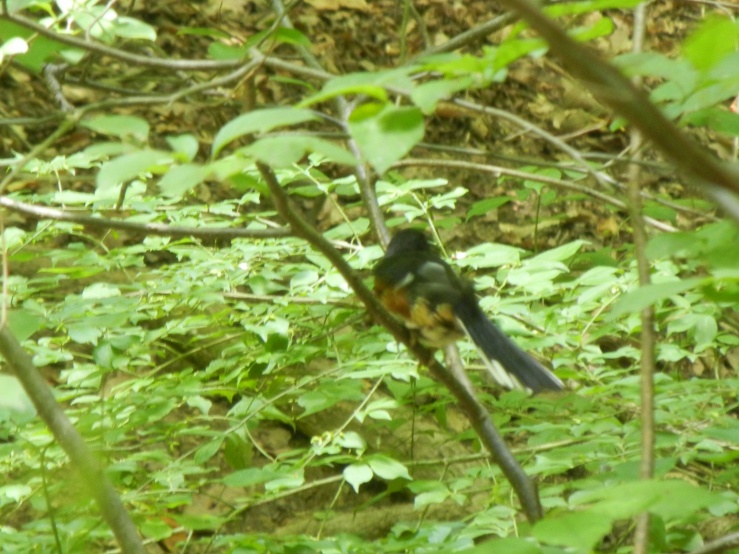Summer tempts us to enjoy life outdoors and to spend more time among nature, to marvel at the engineering of a spider web. It takes a rainy day at last to catch up on tasks indoors.
Mid-July is a beautiful summery time in the woods. There is a sound of fullness in the woods. The green canopy leaves sway and rustle against each other, and the floor of dead leaves sound out loudly when birds or chipmunks move among them. Even an old dead leaf on a branch scratched against a tree trunk to make an unusual whisper. Cicadas buzzed and murmured unseen.
The summer has settled into the forest. Fat leaves and food growing, varieties of insects and mushrooms, moss and ripening berries; the chipmunks and squirrels find odd things to eat – perhaps seeds or roots or insects. There are many chipmunks making their homes in the woods this year and actively snacking and running around. There are interesting things among the tree roots, including shelves of yellow fungus.
On this sunny day, the trail temperature changed dramatically between the cool green shaded sections where cool air drifted down the shaded slopes or drafted upwards from the creek, to the hot sunny sections of trail where it felt like walking through thick slabs of hot air. But cross back into a shaded section and the trail air became immediately cool again as incredibly cool air flowed around. From a simple trail walk it’s clearly demonstrated how well trees can provide protection from the sun and instantly cool the air.
The cool breeziness offered near-perfect conditions for a spider’s web. And many spider webs were delicately bouncing on the breeze waiting to trap insects passing through on the currents of air.
In fact it appeared to be the age of spiders. Spider webs were woven between plants, tree trunks, branches and leaves, with neatly spaced rings and segments of silky thread glinting in the sun; the master or mistress of the web always holding the central position. One web spanned an 8 foot space with one end anchored on gently swaying leaves and the other other end fixed to the trunk of a tree. The web orb itself was fairly small, but somehow the tiny spider was able to span this wide open space and spin a web in the center of the divide.
A pair of blue swallow-tailed birds took to the air currents and dove and swooped over the creek before disappearing underneath a bridge.
Bees and giant wasp-like insects were visiting some flowering vines thriving in full sun along the creek. The vines had small clusters of tiny white flowers and rounded green berries.
In this context of summer green, sun, and shadow, a thin stalk with multiple miniscule purple flowers caught the eye. At a different point on the trail a sole purple flower stood alone among green leafy ground covers.
The only other ground plants with flowers were a few clusters of very tiny clover-leafed plants with small yellow flowers. A set of plants with dried cones were an unusual sight.
A woodpecker flew and climbed high on a tree trunk, then disappeared into the leafy canopy.
Several small blue and grey birds sang and watched the trail and flitted from branch to branch.
Water is essential during these hotter months, and an energy snack too. It’s common to feel drowsier than normal and make a misstep or two. Even regular walkers must take care to watch their footing as rainstorms can wash out trails and expose rocks and roots which will easily catch on a shoe.
